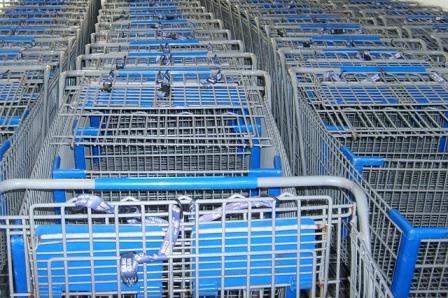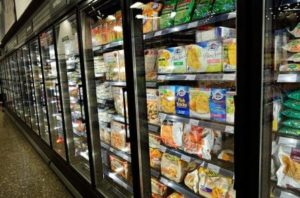- Calls to this hotline are currently being directed to Within Health, Fay or Eating Disorder Solutions
- Representatives are standing by 24/7 to help answer your questions
- All calls are confidential and HIPAA compliant
- There is no obligation or cost to call
- Eating Disorder Hope does not receive any commissions or fees dependent upon which provider you select
- Additional treatment providers are located on our directory or samhsa.gov
Helpful Grocery Shopping Tips for Families in the Recovery Journey

Contributor: Jennifer Rollin, MSW, LGSW, writer for Eating Disorder Hope
When you are supporting a loved one who is struggling with an eating disorder, there are a variety of potentially triggering situations that you can help them to navigate. It is important to note that families do not cause eating disorders. Rather, eating disorders are caused by a combination of genetic, psychological, and environmental factors.
Further, family members can be incredible allies for those who are in recovery from an eating disorder. The following are some helpful tips for grocery shopping with a family member who is in recovery from an eating disorder.
Three Tips for Grocery Shopping
1. Plan ahead for the trip
It is generally a good idea to go into what may be a stressful and triggering situation with a game plan in place. Work with your family member to come up with a list of things and situations in the grocery store that could be potential triggers for them, as well as a list of coping strategies that they can use in the moment. It is often difficult to think of effective ways to cope with triggers while in the heat of the moment. Additionally, planning ahead may help them to feel less anxiety prior to the trip.
2. Ask what you can do to support them
Often it can be helpful to ask your loved one what you can do to support them during the grocery shopping experience. It is best to ask this ahead of time, rather than waiting to ask in the heat of the moment when they may be experiencing anxiety. They might have some suggestions that you might not have thought of. Additionally, what is helpful for one person in recovery may be triggering to another-therefore it is important to hear directly from them what they would like in terms of support.
3. Get creative
If your loved one is having trouble coming up with ideas in terms of how they can go grocery shopping and work on furthering or maintaining their recovery, it can be helpful to come up with some creative suggestions. Examples of ideas that your loved one could use to further their recovery while grocery shopping include the following:
- Make a conscious choice not to look at the nutrition labels while shopping.
- Once at home, have a family member take purchased food items and put them in Ziploc bags (so that nutrition info is unavailable at home).
- Decide not to purchase any food items that are labeled as “light” or marketed as “diet” products.
- If on a meal plan, commit to purchasing the necessary food items on the meal plan.
- Purchase one new challenge food per grocery shopping trip.
- Find a recipe and cook it together as a family.
- Set a time limit for the grocery-shopping trip (for instance if you spend a long time in each aisle you might decide to give yourself only 15 min per aisle).
- Make a shopping list in advance.
 Supporting a loved one who is in recovery from an eating disorder can be challenging. It is crucial that you make sure to utilize good self-care, as you cannot help someone else if you are feeling emotionally drained. Further, individuals who are struggling with eating disorders may start to isolate themselves from loved ones.
Supporting a loved one who is in recovery from an eating disorder can be challenging. It is crucial that you make sure to utilize good self-care, as you cannot help someone else if you are feeling emotionally drained. Further, individuals who are struggling with eating disorders may start to isolate themselves from loved ones.
However, learning to turn to others instead of relying on disordered behaviors can be an integral part of the recovery process. Thus, family members can be incredible sources of support for their loved ones who are struggling with eating disorders.
Rebecca Perkins, a blogger, expressed her thoughts on supporting her daughter who was struggling with an eating disorder when she stated,
“One of the hardest issues I had to deal with was recognizing and understanding that I couldn’t “fix” her. I couldn’t make her better. I couldn’t give her paracetamol or put a band-aid on a grazed knee. This illness was hers, not mine. She had to want to heal herself. In a way, I had to watch events unfold and be there with unconditional love for her at all times. When the rage came I stood and took the full force. When the tears came I sat and comforted…When the fear came I held her in my arms.” [1]
Community Discussion – Share your thoughts here!
What ideas do you have regarding supporting a loved one struggling with eating disorders with grocery shopping?
 About the author: Jennifer Rollin, MSW, LGSW is a therapist, body-image activist, and writer who specializes in working with adolescents, body image concerns, survivors of trauma, and mood disorders. Jennifer is a blogger for The Huffington Post and Psychology Today, as well as a contributing writer for Eating Disorder Hope. For body-positive, self-love, inspiration, “like” her on Facebook at Jennifer Rollin, MSW, LGSW.
About the author: Jennifer Rollin, MSW, LGSW is a therapist, body-image activist, and writer who specializes in working with adolescents, body image concerns, survivors of trauma, and mood disorders. Jennifer is a blogger for The Huffington Post and Psychology Today, as well as a contributing writer for Eating Disorder Hope. For body-positive, self-love, inspiration, “like” her on Facebook at Jennifer Rollin, MSW, LGSW.
References:
[1]: Perkins, R. (2015). Living in the shadow of anorexia nervosa. Retrieved from: http://www.huffingtonpost.com/rebecca-perkins/shadow-of-anorexia-nervosa_b_7761366.htmlThe opinions and views of our guest contributors are shared to provide a broad perspective of eating disorders. These are not necessarily the views of Eating Disorder Hope, but an effort to offer discussion of various issues by different concerned individuals.
We at Eating Disorder Hope understand that eating disorders result from a combination of environmental and genetic factors. If you or a loved one are suffering from an eating disorder, please know that there is hope for you, and seek immediate professional help.
Last Updated & Reviewed By: Jacquelyn Ekern, MS, LPC on June 29, 2016
Published on EatingDisorderHope.com

The EatingDisorderHope.com editorial team comprises experienced writers, editors, and medical reviewers specializing in eating disorders, treatment, and mental and behavioral health.

